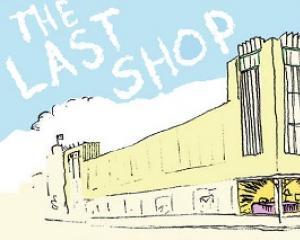When it comes to collecting passport stamps, ODT sports writer Alistair McMurran is a master. Recently, Mali became the 171st country or territory he has visited. Here is part three of his journey.
Travelling in the desert is confusing. It is easy to get lost.
Mamadu, our driver, got lost on the short journey from Timbuktu to the nomad camp where we spent the night.
The desert has become modernised by the use of cellphones and this helped rescue Mamadu who had gone to the wrong nomad camp.
There are rolling sand dunes on the edge of the mighty Sahara desert. Each grain of sand and the scattered acacia bushes look identical.
It confuses the locals, too. That is why the Tuareg people, who live in the desert, travel at night.
This was explained to us by Mohamed, a nomad who travelled from his village in the desert with 30 camels to barter salt for tea and other commodities and to sell trinkets to tourists.
Part of his sales pitch to us was that his chief wanted tobacco and our purchase would enable him to buy tobacco and other goods to make his chief happy.
It is a 10-day journey from his village near the salt mines to Timbuktu.
It was a hot 38degC in Timbuktu and we felt it. But that was not the reason why the nomads travel at night.
"We travel at night and get direction from the stars," Mohamed told us.
"The desert all looks the same during the day."
We met Mohamed outside the Colombe Hotel.
He was dressed in typical nomad clothes of indigo robes and wore a dark blue turban in Otago colours.
He is on the lookout for tourists to whom he can sell trinkets. They are not cheap. One item I purchased that gave me free access to Timbuktu cost $NZ40.
His sales pitch is interesting.
He took us on a mini-tour of Timbuktu through mud streets and past mud-built houses to the big tent where he was based.
A woman brewed tea inside the tent and two young girls came out and talked to us.
We waited about 20 minutes and took a few photos before Mohamed came back with a silver teapot and the ritual of tea drinking began.
It quenches the thirst and tastes sweet.
Mohamed poured the tea into a glass, then into another glass and interchanged this several times before we were allowed to drink.
He then put a small cloth on the sand and put the items he wanted to sell out for us.
"This is my highest price," he said.
I put my lowest price on four items and the bargaining began.
It is confusing when travelling in a foreign country because the currency is different.
You either end up with a bargain or pay too much. A mental calculation goes on and it is easy to get it wrong.
But that is just part of the travelling experience.
Peter Kohl, our travelling companion, is a business tutor from Perth in Australia.
He told us an easy way to do quick calculations from the local currency into American dollars.
"You cross off the last three noughts and double it," he said.
He gave a simple example: 50,000 CAF (Central African Francs) equals $US100.
Peter gave a business lesson to Ishmael, a Timbuktu teenager who followed us during our walk around Timbuktu.
Ishmael is smart and a natural entrepreneur.
He greets visitors in their own language and can say "Good day" in English, French, Spanish and Japanese.
One of the problems when travelling in Mali is not having enough small change for tips.
We tried to get some by purchasing cheap items but found it difficult.
Peter asked Ishmael to change money for us.
He came back with small change, an orange, lemons and some cheese.
We gave him a 20% bonus for his work.
Peter had taught him a new way of making money from tourists.
The Tuareg nomads from the desert know the value of money.
Liz Migliore, a travel agent from New York, gave euros to a woman at a nomad camp and she came back to us to get it in local currency.
One of the boys who followed us around during our walk in Timbuktu was Abdulla, who lives in the desert but goes to school in Timbuktu.
The boys are very polite and like to practise their English on tourists.
He lives in a nomad village 250km away in the desert and it takes 10 days to travel to Timbuktu by camel.
They bring salt to sell at the market.
During the cool season from October to March, a camel caravan from the large salt mines at Taoudenni (about 750km north of Timbuktu) arrives in Timbuktu every few days.
Each caravan has between 20 and 300 camels that each carry four to six slabs of salt weighing about 60kg each.
This long journey takes 16 days.
The salt comes from the beds of ancient lakes. It is dug out in large blocks and split into slabs on the surface.
The highlight of our visit to Timbuktu was to spend a night under the stars at a nomad camp.
The journey by camel took an hour and a-half in the late afternoon sun and we arrived at the camp at dusk.
Liz's camel rebelled and we had a short delay while it was replaced by a more docile animal.
"It was angry," Liz said.
We were all apprehensive at first and felt as though we would fall off the camel on the uneven ground of the rolling sandhills.
The key technique is to lean forward up the slope, to lean backward downhill and to rest your feet on the neck of the camel.
When it stops it goes down with its forelegs first and then with its back legs.
Getting off was difficult because I was a bit stiff after the journey.
The nomads have a semi-permanent tent made of camel skin but we had our own tents.
No torch was needed in the tents because it was a bright moonlight night.
We were cooked a huge local meal of dough bread and vegetables that none of us was able to finish.
But it wasn't wasted because the nomads heated up the scraps and ate it themselves.
We sat under the moon and stars and Sory, our guide, told us that the Tuareg nomads wanted to form a separate nation with Timbuktu as the capital because they felt they were not being treated fairly by the Government based at the capital of Bamako.
He also explained how Timbuktu was one of the world's centres of scholarship in the 15th and 16th centuries until it was sacked by the Berbers from Morocco in 1591.
"They studied astronomy and knew that Sirius had three stars," Sory said.
Most people thought that it had only two stars until powerful modern telescopes proved that the Timbuktu scholars were correct 500 years ago.
The camp is surrounded by a fence of prickly acacia branches. There is a separate pen for the sheep and goats.
The desert is kept clean by the dung beetle that collects human and animal droppings by rolling them up in small balls.
They can push balls that are three times their own size.












